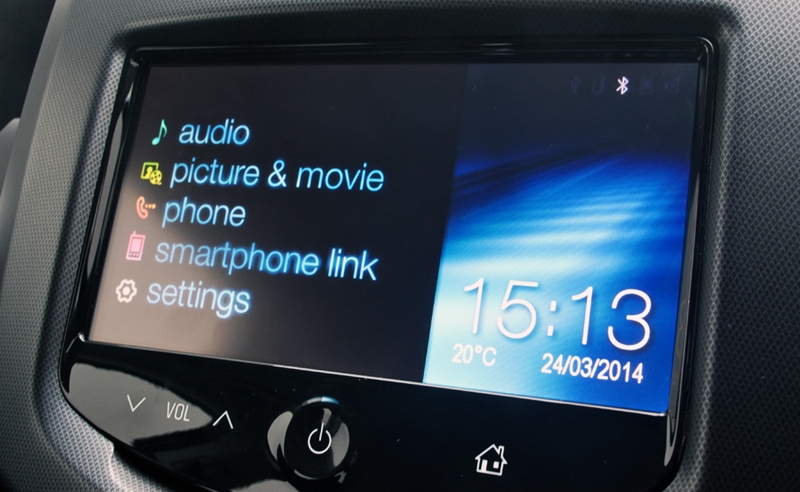If you’ve got pudgy fingers that tend to leave greasy smudges on glossy displays, best you get into the habit of regular hand-washing. Why? Because touchscreens are becoming increasingly popular in modern vehicles. Well, that and hygiene. Hygieneâ€
Cleanliness considerations aside, even technophobes have to accept that the latest infotainment systems are no longer built around the relic known as the CD loader, but instead centre on that roughly rectangular device seemingly glued to the end of your arm. Thatâ€
No ad to show here.
But the MyLink system from General Motors goes one step further. This nifty nugget of tech – which has been around in certain GM products in selected markets since 2012 — allows applications to live in the vehicle as well as on the phone. In effect, this means that the smartphone is able to kick back and function as nothing more than a link between the car and the cloud, by way of its data plan.
The benefits of such a setup? A theoretical reduction on the reliance of mobiles while behind the wheel, which in turn could cut down on distracted driving. Good.
We spent a week with the MyLink system in the Chevrolet Sonic RS, the first model in GMâ€
The seven-inch touchscreen itself is well-placed in the neat dashboard (above the manual air-con controls), high enough to satisfy even tall drivers but not so lofty as to catch any nasty glare from the sun. Along the bottom edge of the screen itself are four capacitive “buttonsâ€: power, home, volume up and volume down. These “always on†controls are frequently used, so itâ€
At first glance, MyLink may seem like a fairly simple infotainment system – little more than a glorified radio tuner, in fact – but it transforms when paired to a smartphone. Connecting via Bluetooth is a simple affair, and allows audio to be streamed and hands-free calls to be made (a simple task after syncing your contacts) and received. Of course, this isnâ€
How you access the really juicy stuff — in the “smartphone link†menu — depends entirely on the flavour of your mobile device. iPhone users are forced to dig out the cable and connect via the USB port tucked away in the dedicated compartment above the conventional cubbyhole (although running the app directly from the phone and streaming via Bluetooth is possible – although it sort of defeats the purpose), while Android addicts can chuckle and merely rely on Bluetooth.
With applications relevant to your market pre-installed on the infotainment system (if new ones become available, a trip to the dealer is likely required), itâ€
So, what sort of apps are available? Well, in South Africa, only two for the time being. The first is Stitcher Smart Radio, an on-demand internet radio service, with an emphasis on news and information podcasts. Thereâ€
The second app, TuneIn, is pretty similar but focuses a little more on music. It provides access to around 100 000 live radio stations and somewhere in the region of two million podcasts, concerts and shows. Handily, it allows the user to explore various genres of music, so whether youâ€
One would hope that more apps are on the horizon for all markets, particularly now that GM has announced plans to introduce the Chevrolet AppShop in the States. In addition to internet radio services, this store will likely offer apps in the fields of weather, hotel bookings, tourism, and person-to-person location sharing. Some markets already feature navigational apps, such as the rather pricey BringGo.
Of course, for those of us who abhor paying for data, thereâ€
And if youâ€
Of course, the system we tested was by no means perfect. It flat-out refused to play virtually all .mp4 files, but had no problems with .avi files. And the use of internet radio apps obviously relies heavily upon rock-steady reception – head too far from civilisation and youâ€
But overall, Chevroletâ€
Now, if we could just sort out our hand-washing habits…
